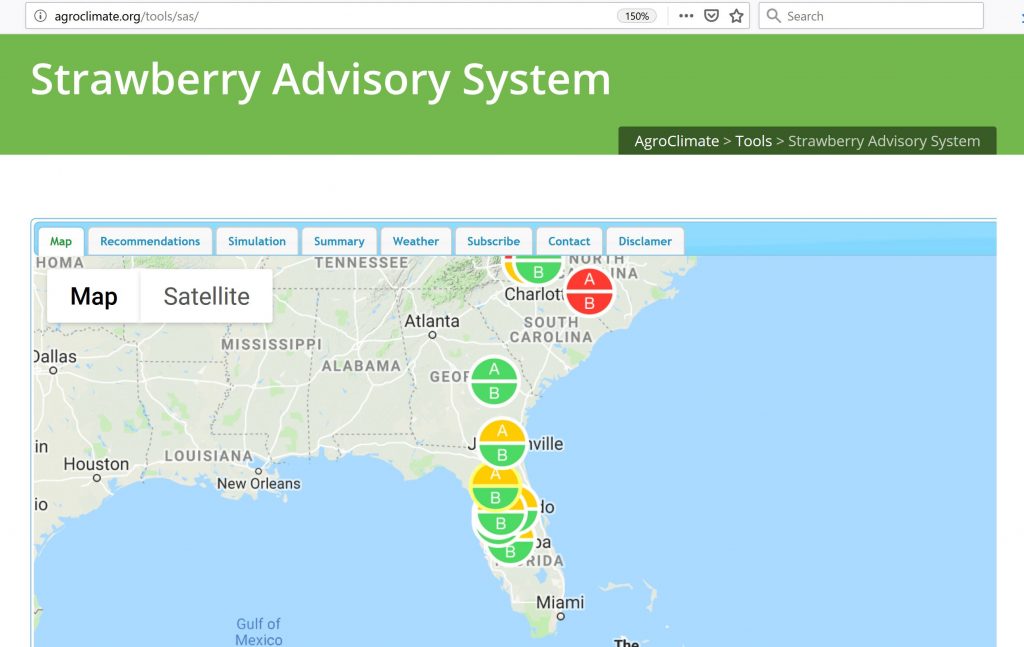Protecting crops from pathogens is always top-of-mind for growers, but crop protection products can quickly burn a big hole in a grower’s wallet. A researcher-developed strawberry advisory system aims to keep that from happening, while still ensuring the crop gets the care it needs.

According to Adrian Zuniga, a doctoral student in Natalia Peres’ lab at the University of Florida, botrytis fruit rot and anthracnose fruit rot are two well-known and devastating diseases in strawberries. “Managing these diseases strongly relies on fungicide application,” he explains.
Zuniga says that normally fungicides are sprayed on a calendar basis every seven days. However, the amount of sprays can increase depending on the climate during the season. “With a higher number of applications, it not only increases cost for the growers, but it also increases pressure from fungicide-resistant pathogen populations,” he says.
During the 2009–2010 Florida strawberry season, the strawberry advisory system was created to help growers avoid extra sprays while keeping crops healthy.
Researchers placed stations throughout Florida, along the East Coast and in California that collect data for the strawberry advisory system. The multiple stations ensure that every prediction is location specific. “It’s basically a web-based disease forecast system,” Zuniga says.
After recording weather conditions in the station’s location, the advisory system determines if the climate is conducive of disease development, and if a fungicide application is necessary. “The prediction is based on foliar wetness duration and the mean temperature during the wet periods,” Zuniga explains.
If an application is deemed necessary, the system will then alert growers in that area via email or text. Growers who subscribe to the system can choose how they would like to receive the alerts. The alerts tell the growers when it’s time to go out and spray, Zuniga says.
Zuniga and his peers performed a meta-analysis to see how well the advisory system works for growers, and the benefits of using the system versus not using it. “We found that following the advisory system does not decrease yield. There’s no difference there whether you use it or not,” he explains. “But it does decrease the number of fungicide applications by approximately 50 percent, which saves the growers a lot of money.”
The website shows each advisory system station in the United States, as well as some recommended fungicides for growers. Visit the website to learn more about the advisory system and to subscribe to the email or text alerts.
This article was featured in the October issue of VSCNews magazine. To receive future issues of VSCNews magazine, click here.









